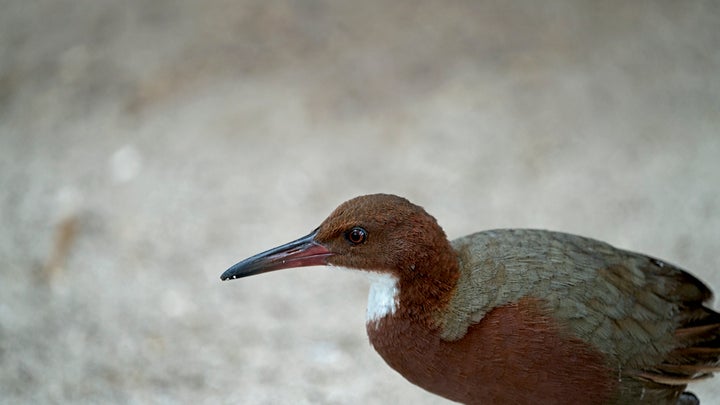
Flightless birds living on a group of isolated coral islands went totally extinct more than 100,000 years ago. Now, flightless birds once again live there, having re-evolved from the same ancestral species.
Researchers from the United Kingdom’s Natural History Museum and the University of Portsmouth made the finding by examining fossil records from the Aldabra atoll ― a group of four coral islands in the Indian Ocean. Their findings were published in the Zoological Journal of the Linnean Society this week.
The Aldabra atoll is home to the Aldabra rail, a flightless bird descended from the white-throated rail. White-throated rails ― which can fly ― are chicken-sized birds native to Madagascar, but are known to travel to other isolated islands and take up residence there, explains a news release from the University of Portsmouth.
White-throated rails that made it to the Aldabra atoll ultimately evolved in such a way that they lost their ability to fly, which they didn’t need since they had no predators there. That became a major disadvantage, though, when the atoll vanished below sea level about 136,000 years ago, killing the animals and plants living there ― including the flightless rails.
But about 100,000 years ago, sea levels dropped again, and flightless rails ultimately appeared again on the atoll. Scientists say fossil records indicate that white-throated rails once again colonized the island, and once again evolved into a flightless subspecies.

“These unique fossils provide irrefutable evidence that a member of the rail family colonised the atoll, most likely from Madagascar, and became flightless independently on each occasion,” said lead researcher Julian Hume of the Natural History Museum in a statement.
The researchers say this is a significant occurrence of iterative evolution ― meaning similar features repeatedly evolving from the same ancestor at different times. As Vice News notes, scientists have observed the phenomenon in animals including sea cows and sea turtles. But University of Portsmouth professor David Martill, who co-authored the study, said this is the clearest known example of the process happening in birds.
“We know of no other example in rails, or of birds in general, that demonstrates this phenomenon so evidently,” he said.